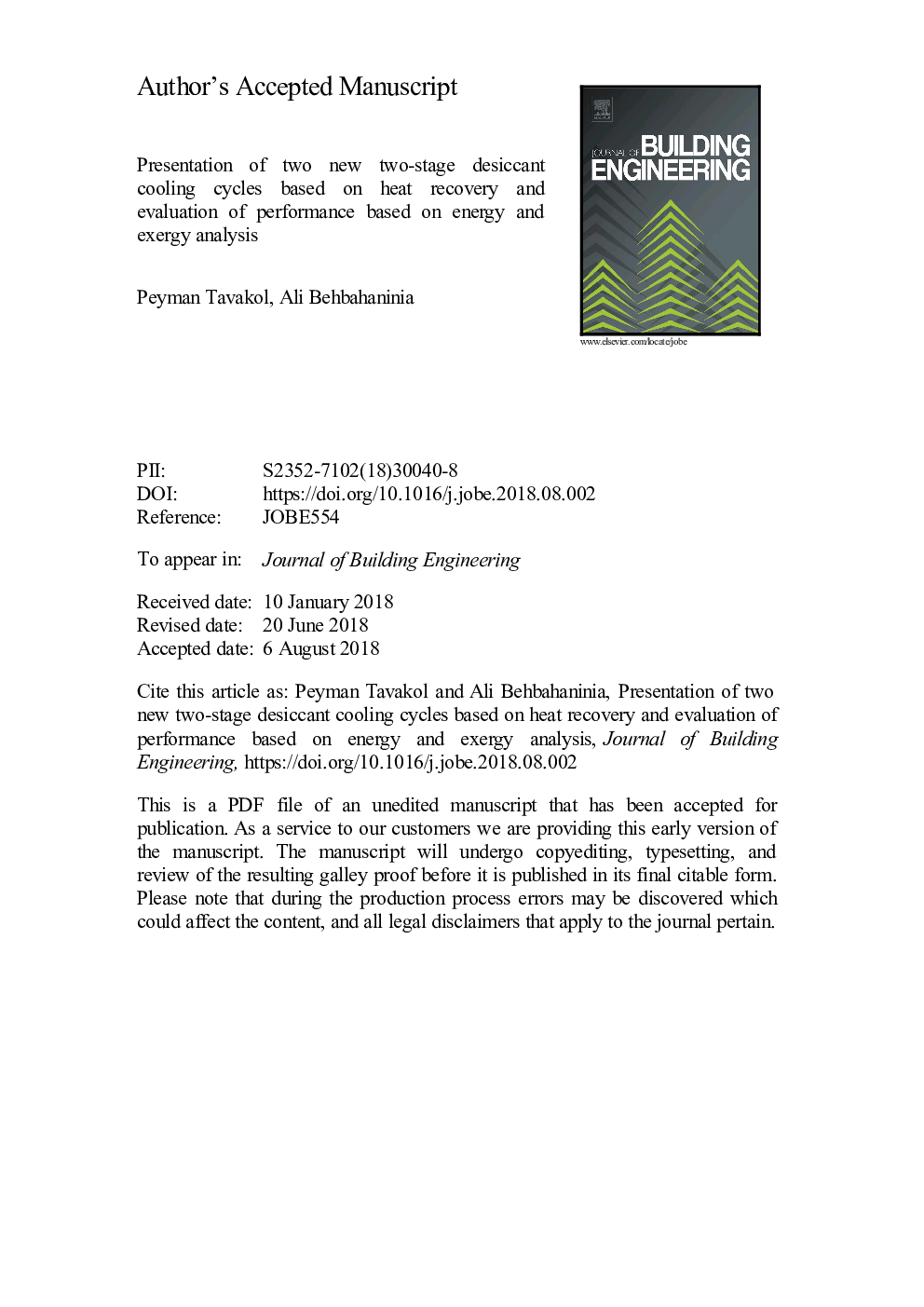| Article ID | Journal | Published Year | Pages | File Type |
|---|---|---|---|---|
| 11001089 | Journal of Building Engineering | 2018 | 34 Pages |
Abstract
In recent years the importance of the issue of energy saving in air conditioning industry, has been taken into more consideration. Using natural refrigerants and setting up a system which is driven by low grade thermal energy sources such as solar energy are the reasons why desiccant cooling systems are alternatives to conventional vapor compression cooling systems. Due to the increase in capacity of dehumidification and decrease in required regeneration temperature in two-stage desiccant cooling systems, they are more efficient than one-stage systems. In addition, heat recovery in a two-stage cycle leads to a reduction in energy consumption. In this paper two new two-stage desiccant cooling cycles which work based on heat recovery are presented. The studied cycles according to their process air are classified into fresh air and returned air cycles. In order to assess the performance of presenting cycles and compare them with the conventional one-stage cycles, energy and exergy analysis are performed. In exergy analysis, some equations are redefined. Furthermore, the amount of fuel exergy, product exergy, summation of exergy destruction and exergy loss and exergy efficiency for each component and the overall system are calculated in all cycles which are studied in this paper. For the regeneration temperature equal to 80â¯Â°C, using the presented two-stage fresh air cycle, decrease temperature and enthalpy of the supplied air 13.06% and 13.76% respectively. Moreover increases the coefficient of performance and exergy efficiency 37.66% and 1.12% respectively compared to conventional one-stage fresh air cycle. In addition using the presented two-stage returned air cycle leads to 12.56% and 12.77% reduction in temperature and enthalpy of the supplied air and it increases coefficient of performance and exergy efficiency 6.87% and 0.49% respectively compared to the conventional one-stage returned air cycle.
Related Topics
Physical Sciences and Engineering
Engineering
Civil and Structural Engineering
Authors
Peyman Tavakol, Ali Behbahaninia,
